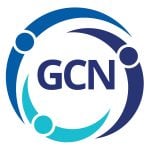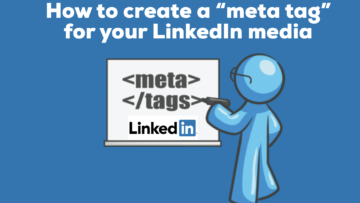In Part 1, we covered the AI Don’ts of Your Job Search and what not to do in this challenging job market. Now we will cover strategies for the AI Dos for your job search and how AI can give you an edge.
This article was co-authored by career coach Lynne Williams and Andrey Maltsev, the founder and CEO of Flidais.ai. The co-authors align on this topic as a whole, but may each bring complementary perspectives and approaches to enrich some concepts.
The AI Dos: How AI Can Give You a Real Edge
Used wisely, AI is less ghostwriter and more assistant: part career coach, part researcher, part editor.
Here’s how to harness AI the right way. Let’s review some AI Dos!
#1 of AI Dos: Use AI as Your Career Coach
Why it works: Giving AI a role and context produces better, more specific advice. Instead of rewriting your resume, it can guide you on how to improve it.
Good prompt:
“You are a resume expert and career coach. I’m a civil engineer with 15 years of experience. My goal is to create a master resume I can adapt for multiple roles. First, scan my resume and the following role(s), provide a compatibility score in percentages, and tell me what’s missing.”
This turns AI into an advisor, not a forger. Recruiters prefer a resume that reflects your true experience, shaped by good coaching.
Pro hack: Combine several detailed prompts or tasks into a single, more effective “mega-prompt.” This improves the quality of AI’s output.
Advanced hack: If you know how to code, use JSON format to structure your prompt. Machines understand structured input better, which will increase both accuracy and speed.
#2 of AI Dos: Run Keyword Analysis
Hiring managers (and ATS systems) often screen for repeated words in job descriptions. If “process improvement” or “stakeholder management” appears five times, it’s not by accident. Recruiters notice when the language in your resume matches their priorities without being copied and pasted.
Andrey’s Keyword Analysis Suggestion: “Here are seven job descriptions I’m interested in. Identify the most common keywords, count how many times they appear, and suggest how I can naturally incorporate them into my resume.” As a pro hack, Andrey suggests analyzing keywords from at least 10 job descriptions that you would apply to. The more jobs you scan, the better the data you get.
Lynne suggests a more targeted approach for keyword analysis. Instead of analyzing seven job descriptions with AI for common keywords, she analyzes an individual job description using AI and three other methods. She calls this a “quadrangulated” approach and may soon add a fifth method after further testing. As a doctoral student, she notes that triangulated research enhances validity and reliability by using multiple methods, data sources, or perspectives. That is why she doesn’t rely only on AI to analyze keywords.
#3 of AI Dos: Check ATS Scores
ATS software doesn’t care about elegant phrasing. It cares about structure and keyword alignment. AI can give you a rough “ATS score” and flag obvious gaps.
Ask: “Evaluate this resume against this job description for ATS compatibility. What skills or sections are missing?”
While not as precise as paid tools, this approach highlights mismatches that could cost you an interview.
In her article, How to Avoid the Applicant Tracking System Black Hole, Lynne states, “Resumes go through a parser and are read by a bot before a human. The bot assigns a mathematical score to your resume based on the job description, reading entire phrases rather than just keywords. The terminology for the technology that reads phrases in your resume with the words before and after the keywords is called contextualization.”
The basis of this article is in chapter 8 of the book published by the Association of Talent Development, called Find Your Fit: A Practical Guide to Landing the Job You Love. The famous author of What Color is Your Parachute?, Dick Bolles, wrote the foreword in that book.
#4 of AI Dos: Prep for Interviews With AI
As previously noted, your resume will help you to land interviews. Interviews get you jobs. AI can predict the likely questions based on your resume and the job description.
Ask: “Given my resume and this job posting, list 10 likely interview questions and suggest strong points I should emphasize in my answers as a job candidate.”
This approach transforms AI into a mock interviewer, helping you avoid being caught off guard.
Pro hack: Instead of typing, use the ChatGPT voice function and have it act as your job interviewer. Speaking your answers out loud forces you to practice in real time, just like in an actual interview. You’ll notice where you stumble, which stories flow naturally, and how confident you sound. It’s a much faster way to prepare than just writing answers down, because you’re training both your brain and your voice.
There are other video interview platforms you can practice with, as noted in the AI Resources article linked above under Don’t #4. Also, check out Grow with Google Interview Warmup.
#5 of AI Dos: Use AI for Market Research
Too many candidates undersell themselves because they are unaware of the industry benchmarks. AI can synthesize salary ranges, role expectations, and hiring trends in minutes.
Example: “Summarize average salaries for mid-level data analysts in Boston and the top five skills employers ask for.”
Armed with this salary information, you walk into interviews with data and confidence, and then you will know what you can negotiate for in terms of salary and benefits.
#6 of AI Dos: Draft Networking Messages (But Rewrite Them)
Networking remains one of the most effective ways to secure interviews. AI can help you brainstorm messages, but don’t send them unedited.
Prompt: “Draft a professional, but warm, LinkedIn outreach message to a hiring manager for this role.”
Then, rewrite it in your own voice. Recruiters value authenticity, and a natural tone opens more doors than a stiff AI draft.
#7 of AI Dos: Use AI to Simplify and to Add Context, Not Complicate
The strongest resumes are often the clearest. AI can help strip out jargon, expand acronyms, and explain your achievements in plain language. For example, instead of writing “Led ERP migration,” AI might suggest: “Led migration of an Enterprise Resource Planning (ERP) system, streamlining operations for 200 staff across three (3) departments.”
Lynne likes bolding the metrics in each bullet point and uses the word and numerical value in parentheses for any numbers zero (0) to nine (9).
Recruiters don’t want to decode buzzwords or acronyms, so make your resume easier to read by putting the acronym in parentheses after the full name.
Another powerful use of AI is adding context about your employer. If you worked at a smaller or lesser-known company, don’t assume recruiters know what it does. For example, instead of just listing “Analyst, ABC Corp”, AI could help you reframe it as: “Analyst at ABC Corp, a Chicago-based fintech startup focused on digital payments.”
Prompt example:
“You are a resume expert. Rewrite my resume bullets to be clearer and more recruiter-friendly. Expand acronyms into full terms, remove unnecessary jargon, and add one short sentence describing each company (e.g., fintech, consulting, or pharmaceutical).
Keep it professional, concise, and focused on results.”
The result will provide extra context that instantly helps recruiters connect your experience to their industry. Clear, contextual resumes get more attention than keyword-packed but vague ones.
Another way to add a company description, as suggested by Lynne, is to include it in the first bullet point. This is important during a company name change after a merger or acquisition. You may need to update the company logo on LinkedIn, but you can still note who originally hired you.
Applicant Tracking Systems (ATS) are databases, and there are character limitations for company names and job titles, so explanations in parentheses about a company name change may not fit where you would like them to go. When constructing a resume, think like a database.
Tell Your Story, Don’t Let AI Tell It For You
AI is here to stay in the hiring process. Recruiters don’t hire perfect resumes – they hire people with authentic stories and accomplishments. Include metrics such as dollars, numbers, or percentages in every bullet point to share your achievements. If you moved mountains before, it is assumed you’ll do so again.
Don’t assume AI is magic; AI won’t apply to jobs for you (well, unless you use a service like Flidais). Use AI to polish, analyze, and prepare. But the story, the substance, must come from you. Follow the AI Dos for success.
Want to know more about Flidais AI?
Flidais believes in an AI-supported job search done differently. They are a done-for-you platform, not a “done-with-you” tool. That means they don’t generate generic resumes or blast spam applications.
Instead, the company can:
- Access over 1.5 million jobs monthly across North America
- Apply within 24 hours, so you’re among the first candidates recruiters see
- Cover 100% of postings (not just the 30% on easy AI apply systems)
- Work with you to create a strong resume that tells your story, then apply with real humans + AI support
Their AI scans, matches, and collects information, but people still hire people. That’s why they combine technology with a human touch, ensuring every application has a soul. Because they believe in results, they back it with their Interview Assurance Guarantee: if you don’t land interviews, you get a full refund.
Flidais is there to support your story, not replace it, and help you secure your next opportunity more quickly.
Of course, you can work collaboratively with Lynne on a solid base resume and LinkedIn profile, which will be done with you, along with her exclusive process for data-driven decision-making for keywords. Then you can use a platform like Flidais to find and apply for jobs on your behalf. Links are below to learn more.
NEXT STEPS
- Subscribe to my newsletter on LinkedIn™ for bright ideas on how to manage your career.
- Subscribe to the Great Careers Network Substack
- If you need a resume or LinkedIn™ profile to get you to your next step, book a call to chat! Can’t beat a free discovery call!
- Join as a member at https://greatcareers.org/membership of the #1 business networking association on the Philadelphia Business Journal’s Book of Lists five years in a row!
- Follow #GreatCareersPHL
BIO
Lynne M. Williams is the Executive Director of the Great Careers Network, a volunteer-run 501(c)3 nonprofit organization that provides career development and networking connections for 1) job seekers in career transition, including veterans, and 2) employed and self-employed for career management.
Aside from writing keyword-focused content for ATS resumes and LinkedIn profiles, Lynne is writing her doctoral dissertation on LinkedIn for Job Seekers. She is a contributing author on “Applying to Positions” in Find Your Fit: A Practical Guide to Landing the Job You Love, along with the late Dick Bolles, the author of What Color is Your Parachute?, and is also a speaker on career topics.




